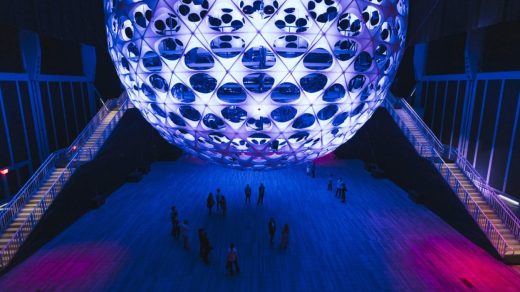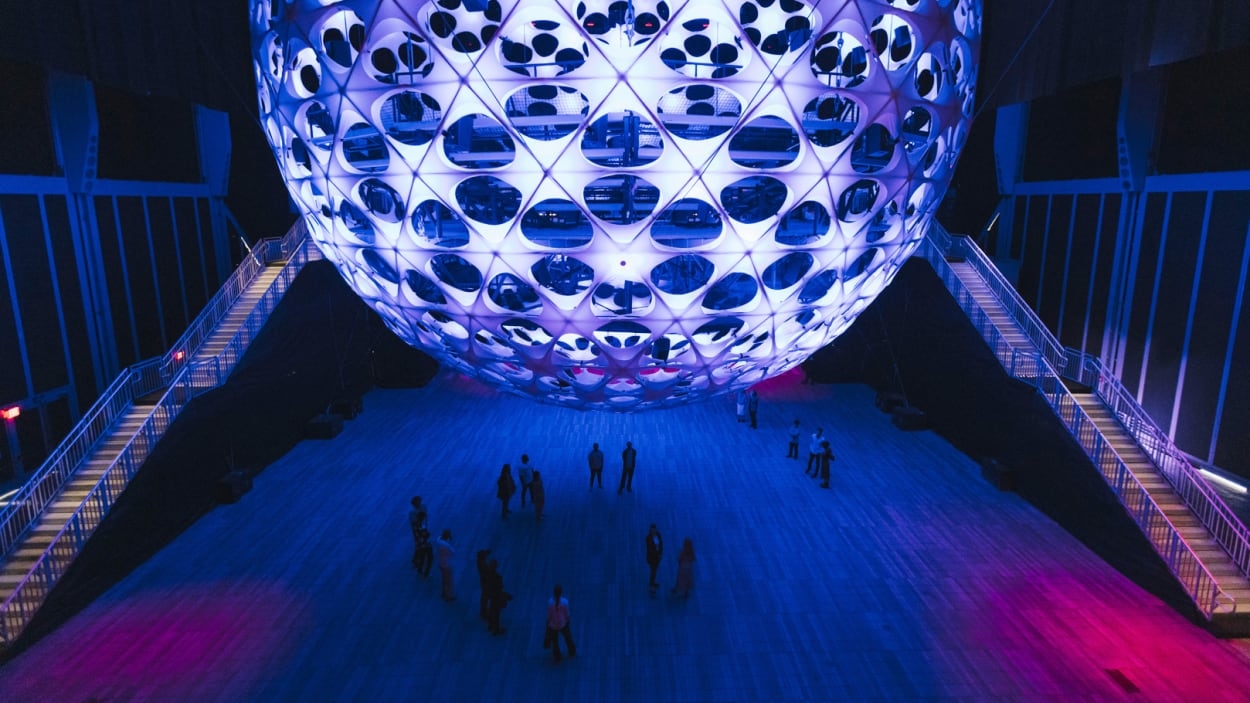How this giant, glowing geodesic dome became the show of the summer
A curious UFO has landed inside The Shed in Manhattan.
At 65 feet in diameter, Sonic Sphere is a perfectly spherical concert hall suspended several feet above the ground. You ascend via a set of stairs, grab a seat in the hollow sphere, and take in a dazzling audiovisual show presented by 124 speakers and a constellation of multicolored LED lights, dancing to the beat of the music. Created by a team of designers and sound engineers, the experience feels like an hour-long meditation inside a futuristic Death Star. But the underlying concept isn’t futuristic at all—it’s actually retro.
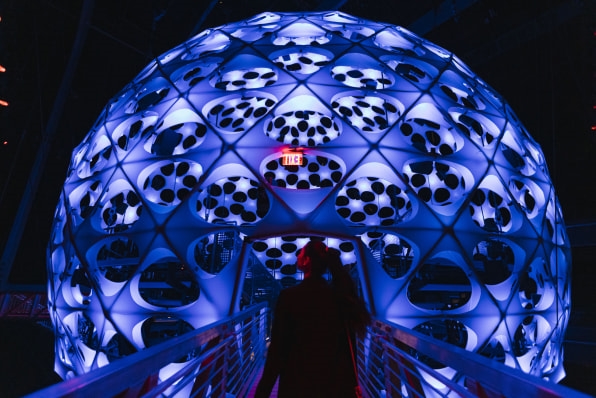
The year was 1970, and more than 64 million people had gathered for Japan’s first World Expo, in Osaka. Attractions included an almost two-million-square-foot amusement park, a 135-foot-tall “Tree of Life” made of steel, and the world’s first—and for the next fifty years, only—spherical concert hall.
The Kugelauditorium, as the concert hall was called, was a geodesic dome akin to Buckminster Fuller’s famous creation. Electronic composer Karlheinz Stockhausen dreamed up the sphere, and architect Fritz Bornemann built it for the West German pavilion at the fair. At about 100 feet in diameter, it was made of a steel skeleton wrapped in a sheathing material and decked out with 50 speakers arranged in seven rings. Based on an old cross section, Stockhausen intended for people to sit on an elevated platform that was made of sound-permeable material that allowed for sound to reach the audience from all sides of the sphere (although photographs of the interior make that a little unclear.)
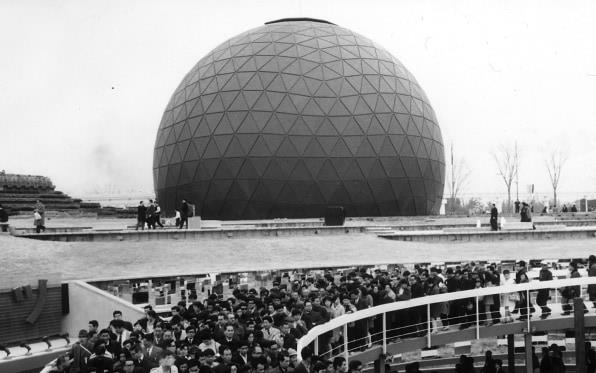
By some accounts, the Kugelauditorium welcomed more than a million visitors during the 180-day exhibition. At the end of it, however, the structure was scrapped, and the idea was never recreated—until 2020, when Ed Cooke, a British cognitive science expert and entrepreneur partnered with sound architect Merijn Royaards, and engineering director Nicholas Christie, who together cofounded Sonic Sphere. (Today, the team also includes design director Chester Chipperfield, plus architects, producers, lighting experts, fabricators, electricians, among others.)
“It was so clear that a spherical concert hall was such an exciting and interesting idea,” Cooke says of Stockhausen’s dome in Osaka. “The original happened in 1970, before the internet ruined everyone’s capacity to pay attention, and I think today more than ever, we require spaces that allow us to pay attention and to connect and to enjoy long-form experiences with each other.”
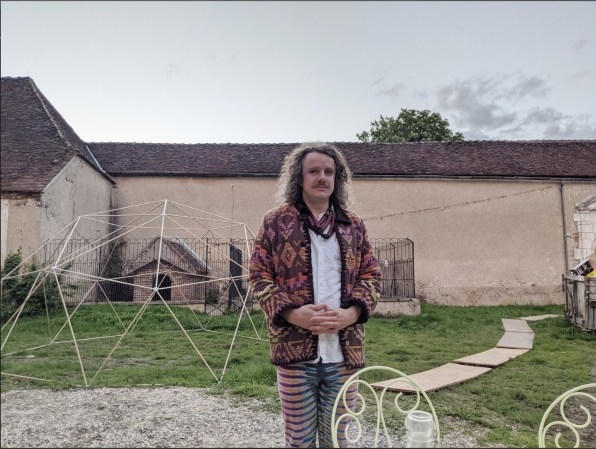
Cooke wasn’t born when the Osaka fair took place. Instead, he had to rely on the little documentation that remains about the project, namely two schematic diagrams that lay out the design of the sphere and the wiring system, three or so photographs (only one of those depicting the interior) and very limited written accounts. “Everything we know about it is from what we were able to find out in books and on the internet, and it’s still not very much,” he says.
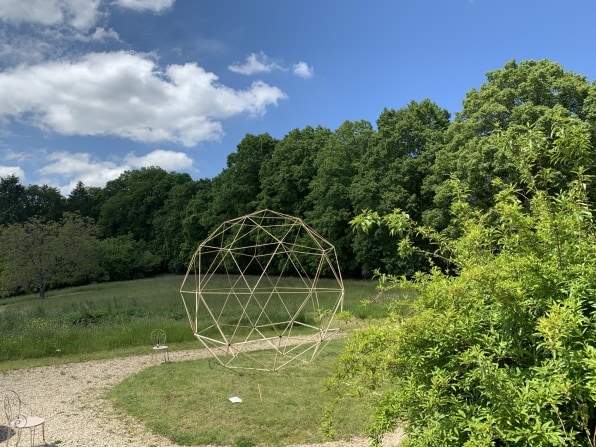
And so, the team set out on an iterative design journey. The first version of the dome—which was technically the second in history, so let’s call it v2—was a 10-foot-wide sphere made of wood and equipped with just ten speakers. It cost about $1,000 to make and people sat on the floor. “One could glimpse something sublime, but it was pretty basic,” Cooke wrote in a tweet looking back at the project’s evolution. Later that year, Cooke built slightly bigger versions in his London bedroom. By v6, which was built in Mexico, the team had reached 23 feet in diameter, and by v9, which took place at Burning Man, they got to 42 feet.
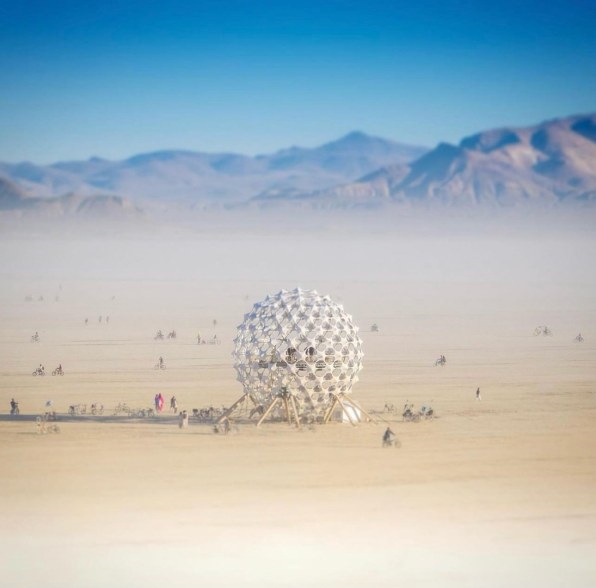
But it wasn’t just the size of the sphere that was changing, the experience inside it was, too. For one, people stopped sitting on the floor—for comfort, but also because the bigger the sphere got, the higher people had to sit to remain in the center of it. In v6, the team stretched a net in the middle, suspending about 25 people mid-air. In v10, they experimented with nets at various angles and made room for a DJ inside the sphere. On top of sound and dancing lights (which they first introduced at Burning Man) they also experimented with a live aerial performance.
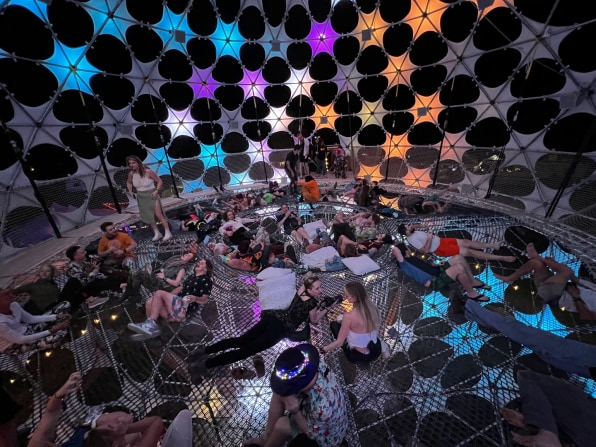
The version at The Shed, or v11, is the biggest yet (it can fit about 250 people). It was built with more than 1,000 steel struts and wrapped in 3,500 yards of cloth. It’s also the first to be completely suspended off the ground, at a total cost of $2 million. “This whole project is about experimenting, to see what it’s like, and intuition which made us interested in is we want to give people feeling of floating,” says Cooke.
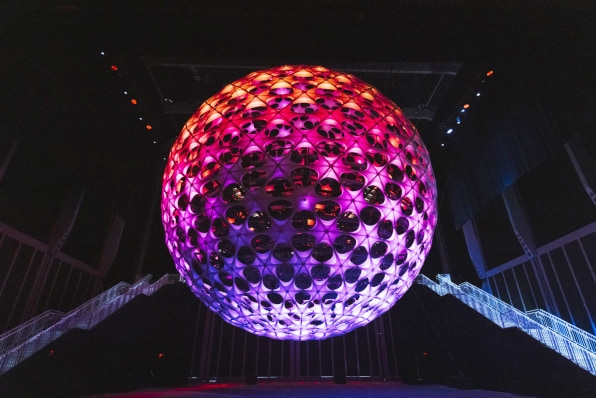
Sonic Sphere is a radical departure from traditional stage design. There is, in fact, no real demarcation between the stage and the auditorium. There is just you in the beating heart of a musical instrument that also doubles as a stage (for pre-recorded music sessions but also the occasional live performance), and a seat for the public.
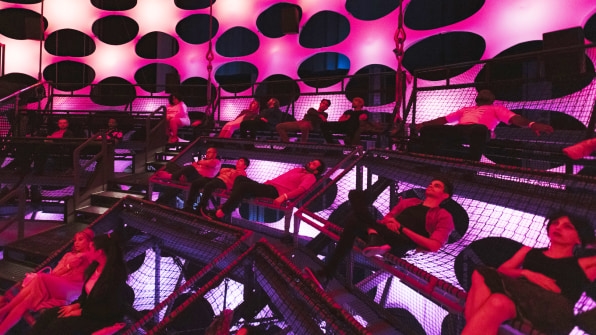
That was always the goal, of course. Alex Poots, The Shed’s artistic director, worked with Stockhausen early in his career. He remembers Stockhausen questioning the notion of unidirectional sound. “Why does it have to just come out of two speakers or just be on the stage?” he says, paraphrasing Stockhausen. “Could you not be enveloped in sound?”
(8)

